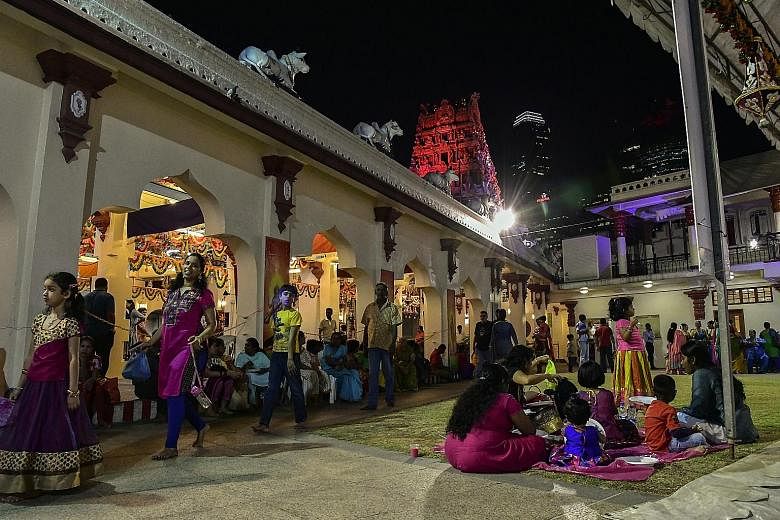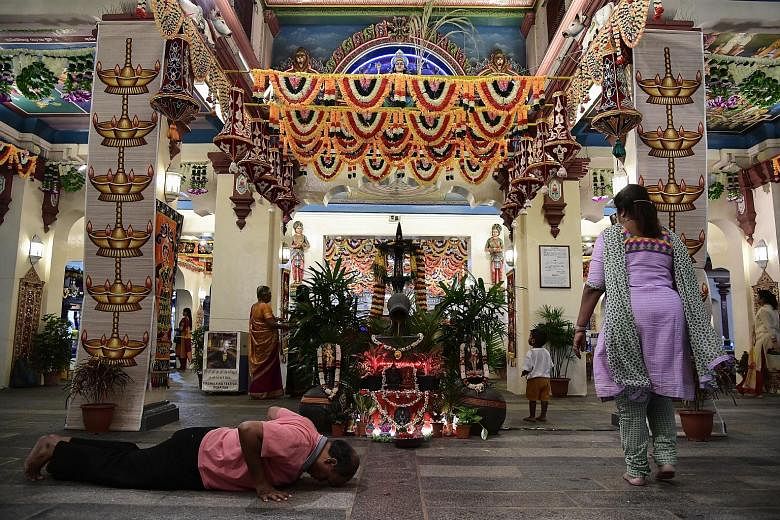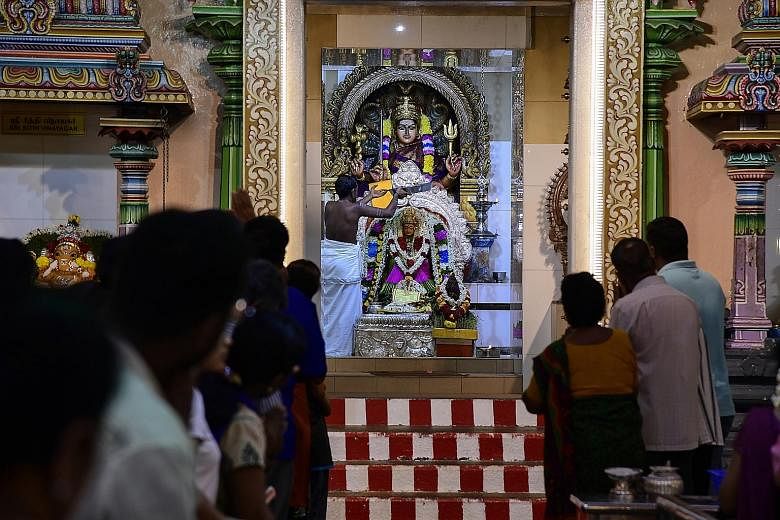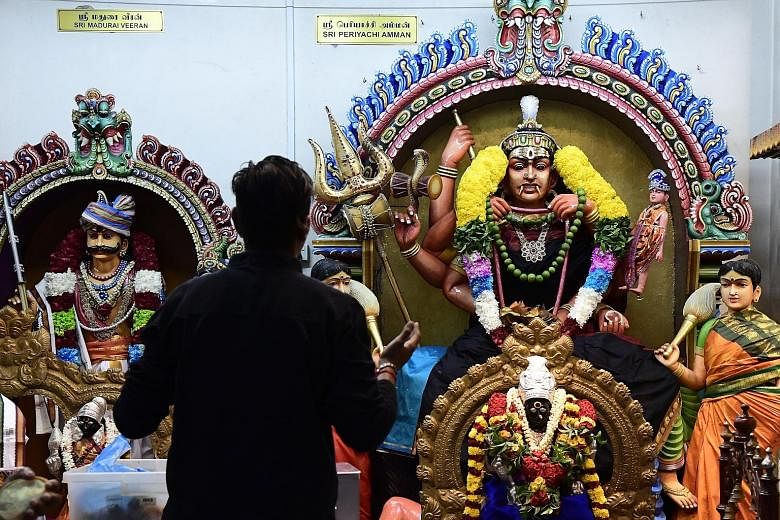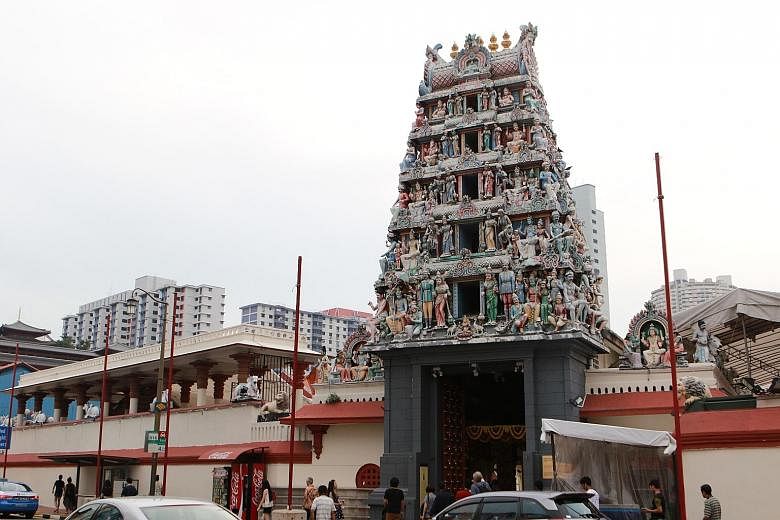A man is playing the mridangam drum on a makeshift stage in a courtyard at the Sri Mariamman Temple in Chinatown.
Across the courtyard, worshippers clasp their palms together in a show of devotion to the temple's deities, while volunteers nearby pluck neem leaves to prepare for prayers.
The festivities are part of the Navarathri festival, a nine-day celebration from Oct 1 to 10 that is part of the lead-up to the annual fire-walking festival to be held this Sunday.
Singapore's oldest Hindu temple has been a venue for the festival for more than 170 years.
"More than 4,000 male participants will walk on fire. It's one of the larger-scale festivals in the region," said chairman of the temple management committee S. Nallathamby, 57. "During the ceremony, the grass patch is dug up and we replace it with charcoal," he added, pointing to the plot of land, about 6m by 3m, next to the stage.
Devotees walk across hot coals in exchange for a wish or blessing granted by the goddess Draupadi.
The event has become so popular that the temple now streams a live telecast of the festival online for viewers to watch from home.
Visitorship to the temple throughout the year has also grown, said Mr Nallathamby.
Set up in 1827, the temple is the oldest in Singapore and was gazetted as a national monument in 1973.
Today, it hosts around 300 tourists on any given day, up from about 100 from five years ago, Mr Nallathamby said. It is also on more travel itineraries. "Whoever goes to Chinatown, will visit the temple," he said, adding that more tourists are bused to the temple as well.
He said: "In the old days, there were not so many visitors... there was not so much awareness. Today, it is so widely publicised, also because of social media... It has a lot of history behind it and that probably brings the crowd."
First built as a humble wood and attap structure in 1827, the Sri Mariamman Temple was founded by Penang government clerk Naraina Pillai, who accompanied Sir Stamford Raffles, the founder of modern Singapore, on his second visit to the island in 1819.
Many of the temple's early devotees were Hindus who came from South India to Singapore to work as coolies, craftsmen or merchants. The temple was a place of lodging for new immigrants till the 1900s, and also the registry of marriages, births and deaths for Hindus.
Mr Nallathamby remembers his visits during the 1960s. "As a child, I used to go with my parents to the temple, we were living close by in Tanjong Pagar," he said.
"In the early days, the place didn't have paved stones. It used to be full of sand. As kids, we used to play around with the sand."
Entire families would go to the temple on Fridays. Children would play while the parents prayed. "It was a space of social gatherings."
For retiree Ratha Krishan, 69, who started visiting the temple regularly after meeting his wife when he was 18, it is a special place. "I was a little rascal before that," he laughed. "After I met my wife, I started going to the temple to pray and I feel changed."
The temple houses statues of deities such as Sri Ramar and Sri Murugan, each in a colourful shrine. It also has a wedding hall.
The temple has a tower crowning its entrance in South Bridge Road. The five-tiered structure is carved with images of Hindu deities, abstract floral decorations and Indian sepoys from the times of the British Raj. Inside, the main deity Sri Mariamman faces the entrance to the east, where the sun rises.
"In the old days, before people had electricity, the rising sun would light up the whole temple," said Mr Nallathamby.
Over the years, the temple has gone through several restoration exercises, with the latest in 2009.
Long-time temple goers still maintain a deep connection with the place, no matter how it looks on the surface. "The bond I have with this temple goes a long way," said Mr Nallathamby.
